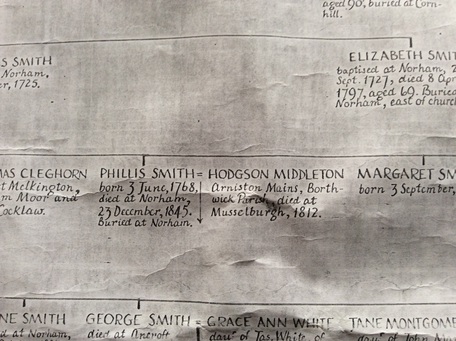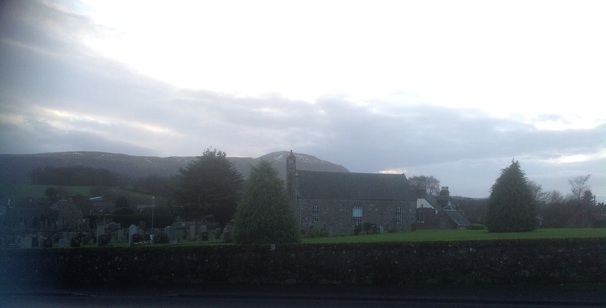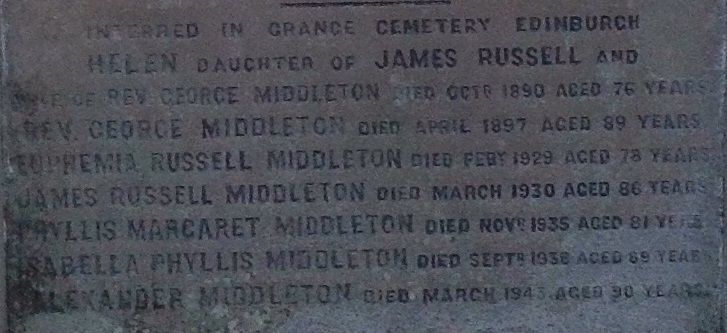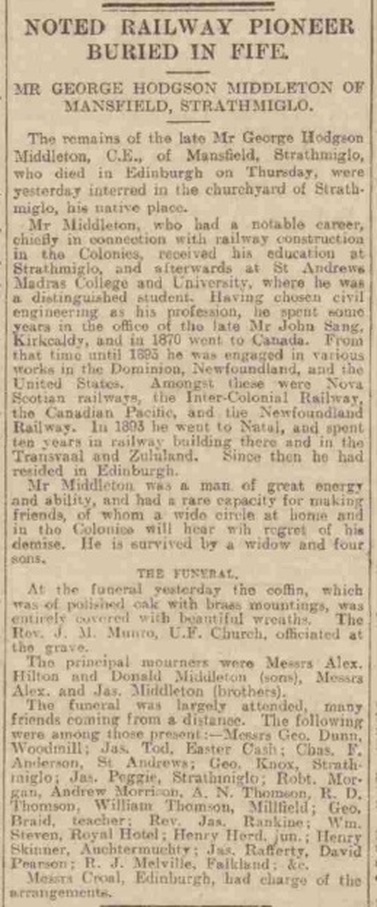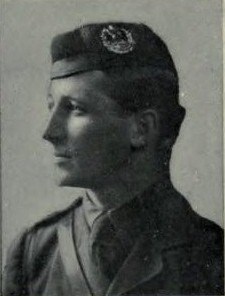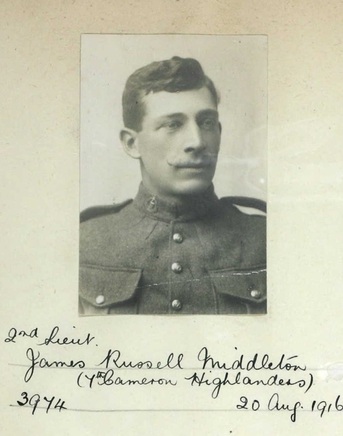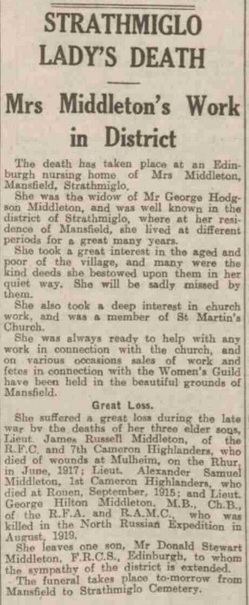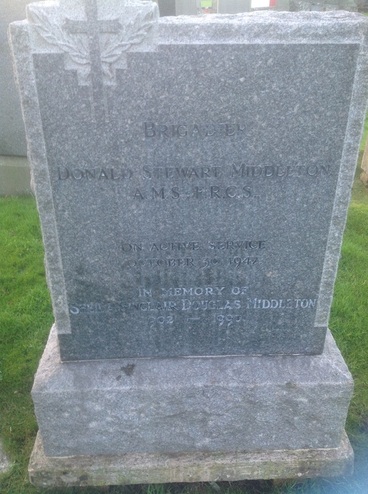IntroductionThe World War I commemorations that have taken place throughout 2014 remain in the forefront of our minds as we approach the oncoming New Year. Indeed it featured in The Queen’s Christmas Speech under her theme of reconciliation, and many fascinating TV documentaries and films covering the various aspects of the subject have never been far from our television screens throughout the year. In this blog I have personalised the subject by examining the records for my own extended family. The result has been both enlightening and distressing at the same time. Now that the International Red Cross POW records for WWI are available online I have been able to track amongst others the movements of my Gt Uncle Leonard Gilbert taken prisoner in Monchy-le-Preux (Battle of Arras), on the 23 April 1917. His daring escape attempts and eventual repatriation forms part of a most interesting research project currently being undertaken by a lovely lady in Denmark. However, as this is a work in progress, now is not the time to delve further into this tale. Instead I shall focus on another branch of the Smith family of Norham, the Middletons, and the story of bravery and loss incurred as a result of war. To this end it is helpful to return to the family tree (extract above) prepared by George Aynsley Smith in the early 20th century. A simple arrow indicates there had been children born to the marital union of Phillis Smith, my 3x great aunt, and Hodgson Middleton in May 1793. Between the years 1794 to 1811 seven children were born at Arniston Mains Farm, in the parish of Borthwick, Midlothian three daughters and four sons. It is the descendants of the youngest son, George born 1802, that is the subject of this post. The Reverend George MiddletonHis mother Phillis (nee Smith) was widowed in 1812 and George had lost his father aged just 10 years old. From Hodgson Middleton, his father’s probate record of 1815 it is clear that Phillis had returned to her Northumberland home and was living with her young family in Castlegate, Berwick upon Tweed. Being the youngest son, and as so often happened in those days George’s future lay with the Church and in 1836 he was ordained Minister at Strathmiglo, Fife where on 9th July 1839 he married Helen Russell of Mansefield House. In the 1841 census they are residing in Strathmiglo Manse where George appears as parish minister but by 1851 they have taken up residence at Mansefield, a property that would remain the family home for many years to come. George’s occupation is now that of retired clergyman and wood merchant. Of the three sons of the Revd George Middleton and his wife Helen Russell, the names of two, Alexander and George Hodgson Middleton would become synonymous with the development of railways throughout the world, particularly in Canada where the brothers would marry two daughters of another well esteemed “railway” family, Elizabeth and Nannie Esther Hazelwood. The boy’s elder brother James Russell Middleton entered the Indian Civil Service and married Alice Davidson the daughter of Sir David Davidson (knighted in 1897), famous, amongst other things, for inventing the elongated rifle bullet! George Hodgson MiddletonIt is on this George Hodgson Middleton I now focus attention. From his newspaper Obituary we learn that following his graduation from the University of St Andrews he spent some years with civil engineer Mr John Sang in Kirkcaldy before departing for Canada in 1870, where he would spend the majority of his next 23 years. During his time in Canada, Newfoundland and the United States, George worked on such projects as the Nova Scotian railways, the Inter-Colonial Railway, as well as the Canadian Pacific and the Newfoundland Railways. He married Nannie Esther Hazelwood, the daughter of Samuel Hazlewood and Elizabeth Bryan in Toronto on 18th August 1886. Their eldest son James Russell Middleton (2), named after his uncle, was born in Toronto in January 1888, their second Alexander Samuel Middleton also in Toronto in 1890. In 1893 George left Canada for Natal in South Africa where he would spend the following ten years in railway construction in the Transvaal and Zululand. Their third son George (Hilton) Middleton was born on the 1 August the same year. During their time in Natal, George and his wife Nannie would experience their first loss, that of their infant daughter Elizabeth Hazelwood Middleton in 1898 followed by the the birth of their fourth son Donald Stewart Middleton in September 1899. 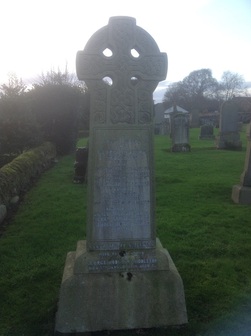 Headstone of George Hodgson Middleton at Strathmiglo Headstone of George Hodgson Middleton at Strathmiglo George did not live long after his return to Scotland and he died at his Edinburgh home 38, Inverleith Place on the 17th December 1908. He was styled “of Mansfield,” and was laid to rest in the peaceful churchyard of Strathmiglo “his native place”. His wife Nannie found herself a young widow, her youngest son Donald just 8 yrs. old. Fortunately her husband, aware of his mortal fallibility and ill health, had left a detailed will in which after provision for his wife, his primary concern was the education their four sons. They all acquitted themselves admirably , the eldest son James Russell followed in his father’s footsteps as a civil engineer in Canada and the youngest two George Hilton and Donald Stewart both graduated from the University of Edinburgh as surgeons. The second eldest Alexander Samuel Middleton, a student of science, also at Edinburgh was the first of the brothers to perish in the Great War. The Middleton Brothers and War
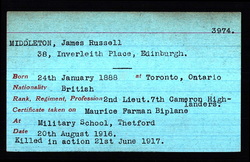 His record states he was killed in action on 21st June 1917, however further delving in the ICRC records tells a different story. They show that his plane was brought down behind German lines and officially reported missing on the 24th April 1917 at Arras, just one day after Gt Uncle Len Gilbert was captured in the same offensive. The records detail the correspondence with his mother over the ensuing months until she is finally notified of his death from his wounds at a POW hospital in Mulheim on the 21st June the same year. James was 29 years old. 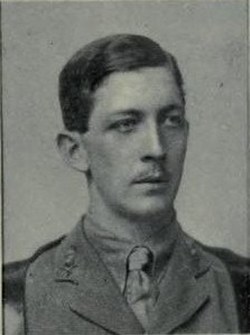 George Hilton Middleton George Hilton Middleton George Hilton Middleton The third brother to enlist was George Hilton Middleton, who had graduated as a surgeon from the University of Edinburgh in 1918, he enlisted with the Royal Army Medical Corps on the 24th October 1918. Surely with the end of conflict in Europe less than a month away his life at least would be spared. Tragically this was not to be. Following a brief period of service in Egypt and the end of the war in Europe, Hilton and his unit were deployed to the Russian front in the futile and controversial allied attempt to quell the Russian Bolshevik uprising. By the late summer early autumn of 1919 the respective governments had begun the withdrawal of troops from the region. Too late for Hilton, who was killed in action at the hands of the Red Army on the 10th August 1919 at Kuznechikha, Archangel. George Hilton Middleton was 25 years old. There is an extremely informative website about this particular offensive, complete with a letter from the front dated 15th August 1919 written by a fellow officer available from the National Archives here:- http://www.nationalarchives.gov.uk/pathways/firstworldwar/spotlights/allies.htm Nannie Esther Middleton, Their MotherNot only had Nannie Middleton lost her only daughter in infancy in 1898,been widowed in 1908, she had now lost three of her four sons to conflict. Thankfully she lived to see her youngest son Donald establish himself as an eminent surgeon and officer within the Territorial Army from 1926, she also lived to see him happily married with two children a girl and a boy before she died in January 1934. Equally it may be a blessing she did not live to witness the tragedy that befell her fourth son Donald Stewart Middleton in 1942. Recently promoted to the rank of Brigadier he too was tragically killed in an air crash in Buckinghamshire while on active service on 30th October. Below I quote an excerpt from his biography as published by the Royal College of Surgeons:- Donald Stewart Middleton“BIOGRAPHICAL ENTRY Middleton, Donald Stewart (1899 - 1942) MRCS and FRCS 10 June 1926; MB ChB Edinburgh 1921; FRCS Edinburgh 1925. Born 30 September 1899 Natal, South Africa Died 30 October 1942 Occupation General surgeon Details:- Born in Natal, South Africa on 30 September 1899 the fourth son of George Hodgson Middleton, civil engineer, and Nannie Hester Hazlewood, his wife, afterwards of 38 Inverleith Place, Edinburgh, and Mansefield, Strathmiglo, Fife. His three elder brothers were killed in the war of 1914-18. He was educated at Edinburgh Academy and University. He served as house surgeon at Paddington Green Children's Hospital and then became assistant surgeon to the Royal Hospital for Sick Children at Edinburgh. He was also surgeon to the Church of Scotland Deaconess Hospital, into whose affairs he threw himself wholeheartedly; he was largely responsible for the reconstruction of the Hospital while he was senior surgeon. In 1934 he was elected assistant surgeon to the Edinburgh Royal Infirmary. He was clinical tutor in the Infirmary and lecturer in surgery at the Royal Colleges' School of Medicine. He was an able surgeon with an easy grace of technique, and a good teacher. Middleton practised at 40 Inverleith Place.
He was a lover of active country life, riding, fishing, and collecting wildflowers. He was also a collector of stamps. During the war he became a keen gardener…”. For a list of publications and source information see Royal College of Surgeons entry http://livesonline.rcseng.ac.uk/biogs/E004679b.htm 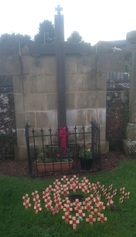 Strathmiglo War Memorial Strathmiglo War Memorial Some small consolation can be taken from the fact that “Sam” Middleton left two children, even though he died aged just 42. Hopefully the Middleton name and descendants from this family live on today. It is interesting to note that the three brothers lost in WW1 appear in the lists of the fallen of South Africa, with James Russell Middleton additionally being remembered amongst the fallen of Canada. In their home village of Strathmiglo, where as well as plaques on the War Memorial, there is a beautiful stained glass window within the Church dedicated to their memory. See link below for image http://www.scotlandsplaces.gov.uk/record/rcahms/100820/strathmiglo-kirk-wynd-strathmiglo-parish-church-war-memorials/rcahms?item=397878#carousel ConclusionCases of multiple fatalities within one family like this was not uncommon, however it is only now that the true extent of these tragedies and their far reaching effects are becoming known, as familial relationships were not recorded by the military at the time. A fabulous article written by Anthony Seldon appeared in the Telegraph newspaper on 21st February 2014 http://www.telegraph.co.uk/history/world-war-one/10652020/First-World-War-Losing-one-child-in-war-is-a-terrible-thing-so-just-imagine-losing-five.html examines this heart breaking subject in greater detail. I think one quote in particular from a mother who had lost five of her eight sons to the war sums it up perfectly. On being thanked by Queen Mary for her sacrifice she replied, “It was no sacrifice, Ma’am. I did not give them willingly". It was not until WWII that measures were taken to protect families from losses such as these. The lead came from the US following the loss of the five Sullivan brothers who perished on the USS Juneau in 1942. It was this story that inspired Stephen Spielberg’s multi award winning film “Saving Private Ryan”. End NotesThe “Memories of a Long Life” by Sir David Davidson give a good insight into the life of a British Soldier in India can be read or downloaded for free here:-https://archive.org/details/memoirsalonglif00davigoog
Tales of the intrepid railway pioneers are told most eloquently in the book “When the Steel Went Through”, the memoirs of another Scottish civil engineer P. Turner Bone. Alexander Middleton features frequently in Chapter 11, http://www.electricscotland.com/history/canada/steel12.htm when in charge of the eastern most section of the Canadian Pacific Railway at Mattawamkeag. I have not delved into the extended Middleton family and their various, and I have to say numerous connections to the extended Smith family, as quite frankly this blog post would be the length of Tolstoy’s “War & Peace”. However I am happy to answer any questions other researchers may have concerning these connections.
13 Comments
|
AuthorSusie Douglas Archives
August 2022
Categories |
Copyright © 2013 Borders Ancestry
Borders Ancestry is registered with the Information Commissioner's Office No ZA226102 https://ico.org.uk. Read our Privacy Policy
